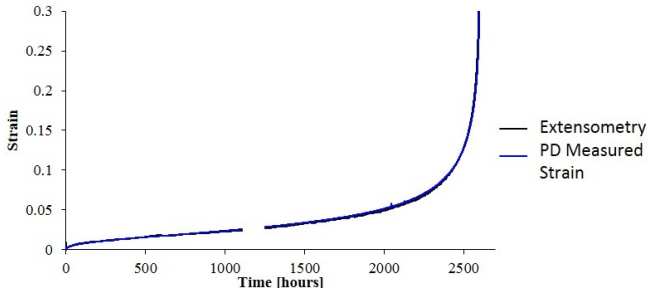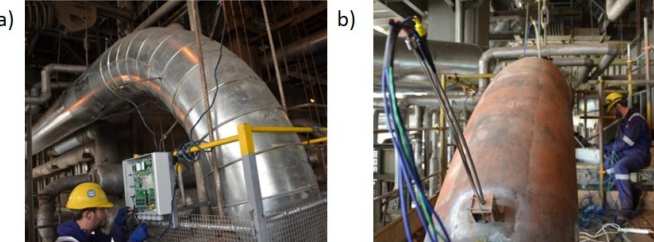Potential Drop Creep Monitoring

For practical engineering applications creep occurs in an inherently harsh, high-temperature environment. There is a strong industry demand for continuous measurements to allow a better understanding of component integrity in a situation where outages allowing inspection are infrequent; in the UK the expected inspection interval is 2+ years. A potential drop (PD) strain monitoring technique has been developed in collaboration with Visiting Professor Peter Nagy which enables the continuous monitoring of the integrity of high temperature components.
Electrodes are permanently attached to the surface of the component and a quasi-DC four-point resistance measurement is taken. As creep strain accumulates the distances between the electrodes change influencing the resistance and therefore strain information can be inferred.
Experimental results from high temperature creep tests and room temperature calibration experiments have shown excellent agreement between independent strain measurements and the PD strain measurement, as shown in Figure 1.

Site trials are currently being conducted at E.ON and EDF sites in the UK. Robust high-temperature sensor hardware has been developed together with an automated battery powered system for regular in-situ measurements, as shown in Figure 2. Data collected so far is very promising. The sensor therefore offers the potential for monitoring creep strain, or more importantly, creep strain rate of a component. The interpretation of which can then be used for integrity assessment and remnant life calculations allowing improved component management and outage planning.
Funding Sources and Sponsors
EPSRC Grant: EP/J015431/1
RCNDE members: E.ON, EDF, RWE npower.


